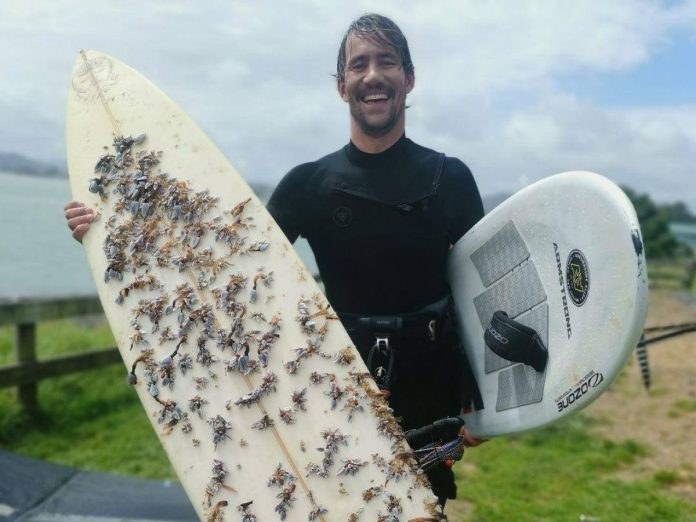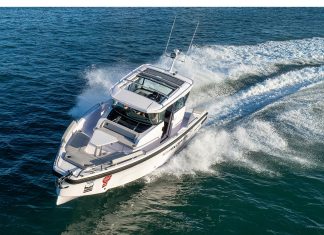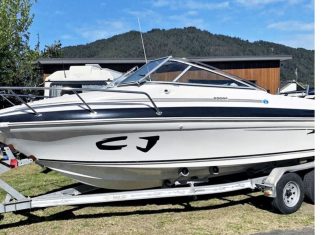Two surfboards, lost seven years apart, both slipped away from Tasmania’s rugged coast. One washed ashore in Raglan, New Zealand. The other re-emerged in Queensland, Australia. The Tasman Sea has a way of reclaiming what’s lost; but why in such different directions?
To oceanographer Dr Edward Doddridge from the University of Tasmania, the stories are remarkable yet scientifically plausible.
As he told ABC News (quoted by Radio New Zealand):
“Things that float and keep floating will eventually wash up somewhere. Currents down Australia’s east coast bend towards New Zealand, and winds push west to east. Still, if you tossed in a thousand boards, very few would end up here.”
It was, he says, a stroke of luck guided by physics; proof of how the East Australian Current sweeps material off the continent and into the Tasman’s swirling gyres, where a wayward board might spend months circling before being nudged toward Aotearoa’s black-sand coast.
Raglan’s long-distance arrival
In May 2024, Tasmanian surfer Liam watched helplessly as his 7 ft 6 in custom board slipped off the deck of a boat and vanished into the swell south of Tasmania. He assumed it was gone forever.
Seventeen months later, kite-surfer Albarito Bueno found it half-buried in the dunes at Raglan, thick with barnacles but still intact.
“Found this surfboard on the west coast of New Zealand in Raglan. Seems like the surfboard has been drifting quite a bit,” he posted to the South African Surfing Legends Facebook group.
Within hours, surfers from South Africa to Hawaii were sharing theories. When someone recognised the shaper’s mark, Bueno discovered the board had travelled more than 2,400 kilometres across the Tasman Sea.
He later updated followers:
“Just had a call with the owner, a charger from Tasmania! The board was lost on a boat trip on the Coast of Tasmania in 10th of May 2024 !!!!!! When the board was lost, the leg rope was on it and the bag as well. The board drifted 17 months and end up in Raglan where I found it.”
A journey in reverse
That same ocean physics helps explain another, even stranger voyage.
In 2017, big-wave surfer Danny Griffiths lost his bright-green tow-board during a wipe-out at Pedra Branca, south of Tasmania. Four years later, two brothers fishing near Townsville, Queensland, 2,700 kilometres away and on the opposite side of the continent, hauled it aboard, barnacle-encrusted but undamaged.
When photos reached Tasmania, Griffiths confirmed it was his. Once again, Dr Doddridge was called to explain.
“It must have gone east from Tasmania, maybe drifted past New Zealand, and then looped back. Going straight up the coast is almost impossible.”
That theory suggests Griffiths’ board completed a vast ocean circuit — leaving Tasmania, skirting New Zealand, then curving north through Coral Sea currents before arriving in Queensland.
One sea, two stories
Two boards. Two Tasmanian surfers. Two improbable journeys, both traced by the same restless sea.
One was carried east to Raglan; the other west to Queensland, each riding a different branch of the same connected system. Together, they reveal the invisible highways of the southern oceans, proof that what drifts away is never truly gone.





















